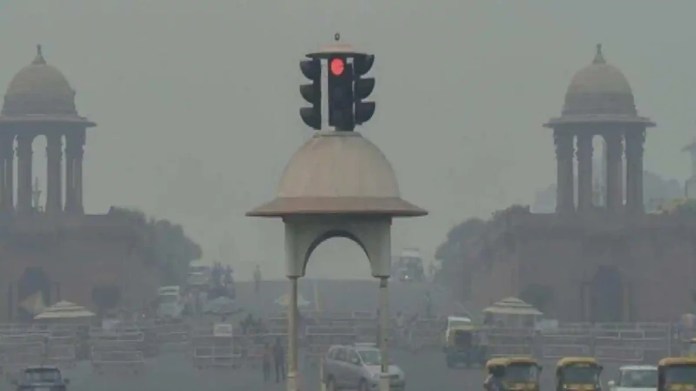The union government’s air quality panel on 7 November ordered the lifting of curbs under Stage 3 of the anti-pollution action plan in Delhi-NCR, including a ban on non-essential construction work. The sub-committee for invoking actions under the Graded Response Action Plan (Grap) held a review meeting in view of a significant improvement in the air quality in Delhi-NCR.
Delhi’s overall Air Quality Index (AQI) stood at 304 today. According to the India Meteorological Department and the Indian Institute of Tropical Meteorology, the air quality index is not likely to slip into the ‘severe’ category in the next few days.
Amid favourable meteorological conditions, the air pollution in Delhi is likely to ameliorate and stay in the ‘poor’ to ‘very poor’ range in the coming days, the Commission for Air Quality Management (CAQM) said in an order.
The Grap sub-committee accordingly decided to revoke stage 3 of the Grap across Delhi-NCR with immediate effect, it said.
The CAQM also said construction and demolition project sites and industrial units which have been issued closure orders on account of violations or non-compliance shall not resume their operations under no circumstances.
All construction and demolition work, except for essential projects, were banned in Delhi-NCR under the third stage of Grap as pollution levels surged to ‘severe’ levels on Saturday (AQI 407).
An AQI between 201 and 300 is considered ‘poor’, 301 and 400 ‘very poor’, and 401 and 500 ‘severe’.
What is Grap? What does it do?
Grap is a set of emergency measures that self-start to prevent further deterioration of air quality once it reaches a certain threshold in the Delhi-NCR region. Approved by the Supreme Court in 2016 and notified in 2017, the plan was formulated after several meetings that the Environment Pollution (Prevention and Control) Authority (EPCA) held with state government representatives and experts. The result was a plan that institutionalised measures to be taken when air quality deteriorates.
As per the dynamic model and weather or meteorological forecast, the significant deterioration in the air quality of Delhi-NCR is possibly due to localised factors. Therefore, in an effort to steer clear of further deterioration of air quality and to maintain the AQI of Delhi, the call to re-invoke all actions as envisaged under Stage III of the Grap — ‘Severe’ Air Quality (DELHI AQI ranging between 401–450) was taken by the sub-committee on 4 December. This was in addition to the preventive or restrictive actions mentioned in Stage I and Stage II of the Grap.
Accordingly, a 9-point action plan as per Stage III of Grap has been applied in the entire NCR in addition to preventive or restrictive actions of Stage I and Stage II of the Grap, which are already in place. This 9-point action plan includes steps to be implemented or ensured by different agencies and PCBs of NCR and DPCC. These steps are:
- Intensified frequency of mechanised or vacuum-based sweeping of roads
- Daily water sprinkling along with the use of dust suppressants, before peak traffic hours, on roads and right of ways including hotspots and heavy traffic corridors and proper disposal of the collected dust in designated sites or landfills
- Intensification of public transport services. Introduce differential rates to encourage off-peak travel
- Construction and demolition activities
Enforce a strict ban on construction and demolition activities in the entire NCR, except for the following categories of projects:
- Railway services or railway stations
- Metro Rail Services including stations
- Airports and Inter State Bus Terminals
- National security or defence-related activities or projects of national importance
- Hospitals or healthcare facilities
- Linear public projects such as highways, roads, flyovers, over bridges, power transmission, pipelines etc
- Sanitation projects like sewage treatment plants and water supply projects etc
- Ancillary activities specific to and supplementing the categories of projects above.
With inputs from PTI and PIB




You must log in to post a comment.